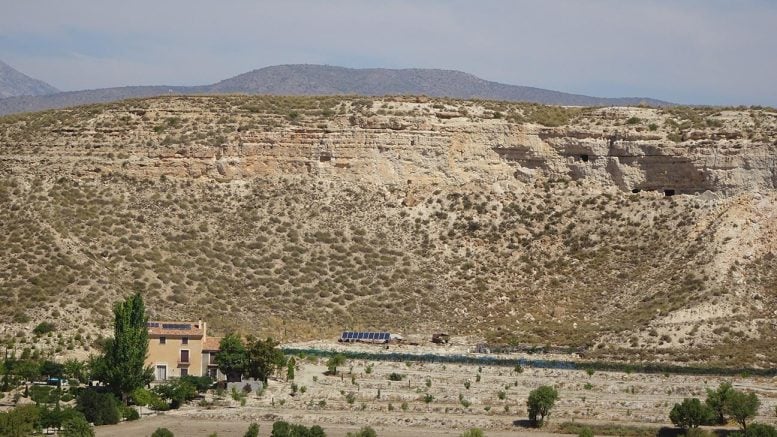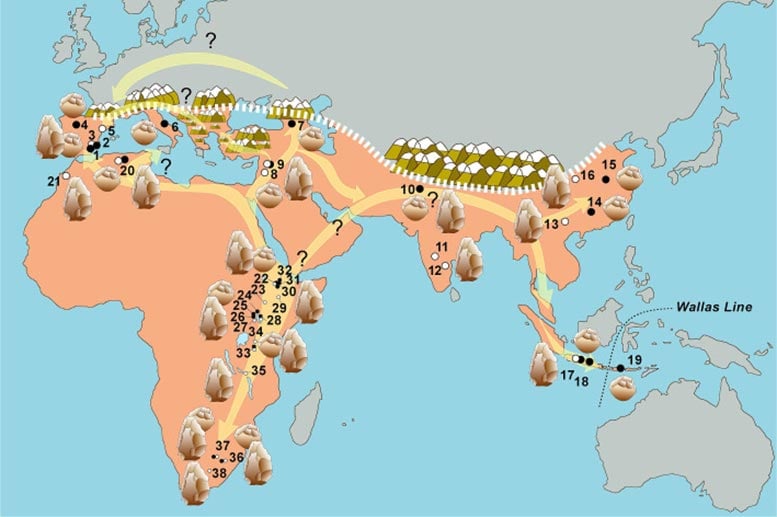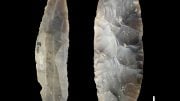
A study in Spain’s Orce region suggests it hosts the oldest human remains in Europe, dating back 1.3 million years. This supports the hypothesis that early humans migrated to Europe via the Strait of Gibraltar. The findings, based on paleomagnetism and faunal comparisons, challenge the traditional view of an Asian migration route. The data of this study are very precise thanks to the long sedimentary sequence that outcrops in Orce, with 15 vertebrate deposits superimposed in different stratigraphic positions. Credit: Lluís Gibert – University of Barcelona
Spain’s Orce region holds Europe’s oldest human remains, dating 1.3 million years ago, indicating migration through the Strait of Gibraltar.
Researchers may have solved one of the most widely debated questions about human evolution and expansion: when, and by what route, did the first hominids arrive in Europe from Africa? Geological dating techniques at the Orce sites (Baza basin, Granada, Spain) have determined that human remains found in this region are the oldest in Europe, dating back 1.3 million years. This supports the hypothesis that humans entered Europe through the Strait of Gibraltar, instead of returning to the Mediterranean via the Asian route.
The study, led by Lluís Gibert, researcher and lecturer at the University of Barcelona’s Faculty of Earth Sciences, was conducted in collaboration with researchers from the Berkeley Geochronology Centre and Murray State University.
Geological Techniques and Dating
The new dating has been based on the analysis of the paleomagnetism of an area of the Orce region, which has never been sampled before and which has been protected from the erosion that this basin has suffered over the years. This technique is a relative dating method based on the study of the inversion of the magnetic poles of the planet due to the internal dynamics of the Earth. These changes do not have a specific periodicity, but they are recorded in the minerals and make it possible to establish time periods from the different magnetic events.
These new data are very precise thanks to the long sedimentary sequence that outcrops in Orce. “The uniqueness of these sites is that they are stratified and within a very long sedimentary sequence, more than eighty meters long. Normally, the sites are found in caves or within very short stratigraphic sequences, which do not allow you to develop long palaeomagnetic sequences in which you can find different magnetic reversals,” says Gibert.

This new dating would be added to other evidence that would tip the balance in favor of the colonization of Europe through the Strait of Gibraltar. Credit: Earth-Science Reviews
The researchers have been able to identify a magnetic polarity sequence “with five magnetic events that allow them to place the three Orce sites with human presence between the Olduvai and Jaramillo subchron, that is, between 1.77 and 1.07 million years ago (Ma),” explains Gibert. They subsequently applied a statistical age model to accurately refine the chronology of the different stratigraphic levels with a margin of error of only 70,000 years.
They found that the Venta Micena is the oldest site with human presence in Europe, with an age of 1.32 Ma, followed by Barranco León, with an age of 1.28, and finally Fuente Nueva 3, with an age of 1.23 Ma. “With these data, the other major site on the peninsula, the Sima del Elefante in Atapuerca, would be relegated to second place, far behind Orce, between 0.2 and 0.4 Ma more modern,” Gibert adds.

Image of the last excavation carried out in the site of Venta Micena 3 in Orce (Granada, Spain), where the first human remains were discovered. Credit: Lluís Gibert – University of Barcelona
Analyzing Faunal Evidence
To complete the dating, the researchers analyzed the fauna found at the different sites in Orce, as this is different depending on the period, and compared it with that found at other Early Pleistocene sites in other parts of Europe.
In this sense, the paper presents a detailed analysis of the micromammals and large mammals from all the Orce sites, carried out by the expert Robert Martin, based on the palaeontological collections stored at the Museum of the Catalan Institute of Palaeontology Miguel Crusafont (IPS) in Sabadell. “The results indicate that the small and large fauna of Orce is more primitive than, for example, that of the Sima del Elefante, where the evidence shows that the rodent Allophaiomys lavocati is more evolved than the Allophaiomys recovered from the Orce sites,” Gibert explains.
Another relevant indicator of the age of the Orce sites is the absence of the ancestors of the pigs. “These animals are considered to be Asian immigrants and have not been found in any European site between 1 and 1.5 Ma, while they have been found in the Sima del Elefante, supporting that the Orce fauna is older,” says Gibert.

Lluís Gibert, researcher and lecturer at the University of Barcelona’s Faculty of Earth Sciences. Credit: University of Barcelona
Evidence Pointing to Passage Through Gibraltar
According to the researcher, this new dating in conjunction with existing evidence tips the balance in favor of the colonization of Europe through the Strait of Gibraltar, rather than the alternative route: the return to the Mediterranean via Asia, such as “the existence of a lithic industry with similarities to that found in the north of the African continent and also the presence of remains of African fauna in the south of the peninsula, such as those of Hippopotamus, found in the sites of Orce, and those of Theropithecus oswaldi, an African primate similar to a baboon, found in the Victoria cave, a site near Cartagena (Murcia), non-existent anywhere else in Europe.”
Gibert added, “We also defend the hypothesis that they arrived from Gibraltar because no older evidence has been found at any other site along the alternative route.”
These new data are very precise thanks to the long sedimentary sequence that outcrops in Orce.
Similarity to Hominids From the Island of Flores
With these results, the researchers point to a “diachronism” between the oldest occupation of Asia, measuring 1.8 Ma, and the oldest occupation of Europe, which would be 1.3 Ma ago, so that African hominids would have arrived in southwestern Europe more than 0.5 Ma after leaving Africa for the first time about 2 Ma ago.
“These differences in human expansion can be explained by the fact that Europe is isolated from Asia and Africa by biogeographical barriers that are difficult to overcome, both to the east (Bosphorus Strait, Dardanelles, Sea of Marmara) and to the west (Strait of Gibraltar). Humanity arrived in Europe when it had the necessary technology to cross maritime barriers, as happened before a million years ago on the island of Flores (Indonesia),” says Gibert.
He explains that, in this sense, the Gibraltar route currently requires crossing up to fourteen kilometers of sea route, but “perhaps in the past this distance was shorter at certain times due to the high tectonic activity in this region and the fluctuations in sea level that favored migrations.”
“As cited in the paper, we have identified other migrations of African fauna through Gibraltar at earlier times, 6.2 and 5.5 Ma ago when the Strait of Gibraltar was very narrow.”
Archaeological and Genetic Evidence from Orce
A total of five human remains were found at the Orce sites since excavations began in 1982 by the palaeoanthropologist Josep Gibert. Firstly, two fragments of humerus bitten by hyenas were found at Venta Micena, as well as parts of a cranial fragment consisting of two parietals and an occipital, associated with an abundant Early Pleistocene fauna. The human provenance of these remains generated great controversy for years, although independent paleoproteomics studies by the Universities of Granada and San Francisco identified human proteins in the remains.
The subsequent discovery at the nearby sites of Barranco León and Fuente Nueva 3 of two human molar teeth and thousands of Olduvayan lithic tools — one of the first human lithic industries — as well as cut marks on bones “served to consolidate the evidence of the presence of hominids in the Early Pleistocene at Orce,” concludes Lluís Gibert.
Reference: “Magnetostratigraphic dating of earliest hominin sites in Europe” by Luis Gibert, Gary Scott, Alan Deino and Robert Martin, 2 July 2024, Earth-Science Reviews.
DOI: 10.1016/j.earscirev.2024.104855









Be the first to comment on "Oldest Human Fossils in Europe Discovered: 1.3 Million-Year-Old Remains Challenge Previous Migration Theories"